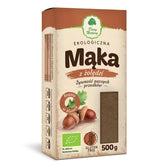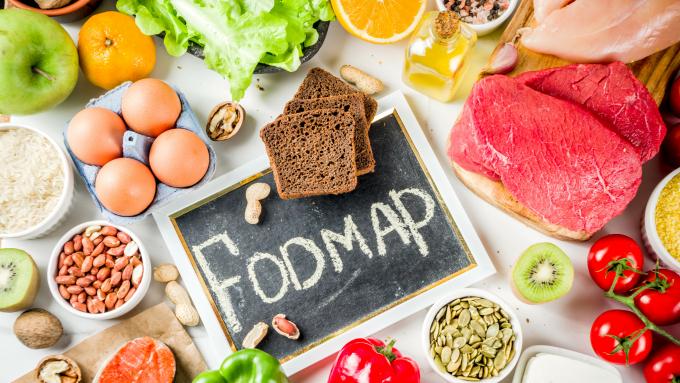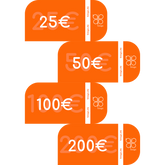Who is the FODMAP diet suitable for? Get to know the rules and the application
- Who is the FOODMAP diet suitable for?
- What are the different phases of the diet?
- The FODMAP diet didn't help me, why?
- Monash University smartphone app
- Summary
More and more people are experiencing bowel problems, and the quality of diagnosis of irritable bowel syndrome has improved. One solution to these problems is the Food Map Diet.
FODMAP diet – this term was first used by Australian scientists at Monash University. They discovered that certain specific carbohydrates trigger symptoms of irritable bowel syndrome (IBS) .
|
F |
ERMENTABLE |
|
O |
LOGOSACCHARIDES |
|
D |
Isaac |
|
M |
ONOSACCHARIDES |
|
A |
ND |
|
P |
OLYOLS |
The name is an abbreviation of the initial letters of the individual carbohydrate groups: oligosaccharides, disaccharides, monosaccharides, and polyols, as well as the fermentation names. These terms are crucial because this diet involves limiting or eliminating easily fermented, poorly absorbed carbohydrates with high osmotic pressure, which include fructose, lactose (milk sugar), fructans, galactose, and polyhydric alcohols (including sweeteners such as sorbitol, mannitol, maltitol, and xylitol). These carbohydrates enter the small intestine unchanged via the mouth, esophagus, and stomach. They exhibit strong osmotic properties and lead to the accumulation of fluids in the lumen of the small intestine. This causes an acceleration of intestinal motility, which often leads to diarrhea in patients. From the small intestine, they pass into the large intestine, where they undergo bacterial fermentation, producing large amounts of carbon dioxide ( CO2 ), methane ( CH4 ), and even hydrogen sulfide ( H2S ). In patients, this manifests as an excessively bloated abdomen, sometimes resembling that of a pregnant woman. This is often accompanied by pain, discomfort, excessive gas production, nausea, and the aforementioned diarrhea or constipation.
The diet consists of 3 phases:
I-Elimination phase – 2-8 weeks
II – Reintroduction phase – reintroduction of products with high FODMAP envy to determine the degree of tolerance of individual products
III-Phase individual adjustment of nutrition
This diet must be followed under strict control because people who follow it are exposed to a lower intake of fiber, calcium, iron and zinc.
Who is the FOODMAP diet suitable for?
The diet is considered an effective method for treating irritable bowel syndrome (IBS). It is reported that the FODMAP diet helps up to 86% of patients. However, it should be noted that this diet does not cure IBS, but only relieves symptoms. It is also used for small intestinal bacterial overgrowth ( SIBO ) and recurrent bloating, excessive gas, diarrhea, or constipation.
What are the different phases of the diet?
I – Elimination phase
This stage lasts 2–8 weeks, until all adverse symptoms of irritable bowel syndrome disappear and health improves. It involves the exclusion of all products with a high FODMAP content and the consumption of products with the so-called "allowed" FODMAP. However, despite many restrictions, the diet should be varied to avoid nutrient deficiencies. However, look for products labeled as low in lactose or gluten-free breads made with so-called "gluten-free wheat." A gluten-free diet is often successful for patients with irritable bowel syndrome, but the problem is not gluten, but the fructans contained in the grain. Therefore, a gluten-free diet is not sufficient for those suffering from it.
At this stage, it is necessary to completely exclude products, and not just certain sugars, since most products are a mixture of various rapidly fermenting sugars.
This stage brings relief to many patients after many days of suffering, so many patients don't want to move on to the next stage and expose themselves to unwanted symptoms. However, this stage cannot be prolonged due to the disruption of the natural bacterial flora of "good bacteria," and prolonged use can lead to deficiencies. Dieting during this stage is also extremely arduous and difficult to maintain. Phase two can be frustrating, but it must be achieved.
Low FODMAP product table :
|
Group of products |
Low FODMAP products – allowed |
|
Dairy and milk-like products |
Goat and coconut milk yogurt, butter, mozzarella, lactose-free products, almond milk, cheddar, feta, rice milk, |
|
fruit |
Pineapple, lemons, kiwi, limes, tangerines, oranges, papaya, strawberries, cranberries, rhubarb |
|
Vegetables |
Chard, chicory, pumpkin, cucumbers, red peppers, arugula, parsley, carrots, radishes, tomatoes, celeriac, potatoes, spinach, kale, pumpkin |
|
Cereal products |
Corn, millet, spelt, potato, buckwheat, rice flakes, quinoa, rice |
|
Nuts and seeds |
Poppy seeds, peanut butter (100%), macadamia nuts |
|
Protein sources |
Turkey, eggs, lamb, tofu, beef, pork |
|
Sweeteners and sweets |
Maple syrup, powdered sugar, white and brown sugar, stevia |
|
Drinks |
Black, green, white, mint tea, tomato juice, cranberry juice, permitted fruit juices |
II – Reintroduction phase
This phase is highly individual and depends on lifestyle, the nature of IBS symptoms, product and dietary preferences, and, most importantly, the body's response to individual groups of FODMAP products. Symptoms may recur during this stage.
The patient continues to follow the principles of the first phase, but during the first phase, additional products or groups of products from the "forbidden" list are introduced. Initially, products containing only one type of sugar are introduced, for example, fashion, agave syrup - fructose, regular cow's milk, followed by dairy products - lactose, sweet potato mannitol, blueberries - sorbitol. Tolerance to a particular sugar is tested for a few days, then one specific carbohydrate is eliminated and another is tested. Finally, products containing a mixture of different sugars are introduced. This is done to determine which products are truly harmful and to expand the list of edible products. When introducing a particular product, the patient should do so slowly and gradually until they accept or reject products outside the permitted list and completely eliminate them. After testing one or a group of products, they should be completely discontinued, then test the next group, and so on, until the end of Phase II - reintroduction. At this stage, no compatible products may be introduced, as otherwise the “personal tolerance threshold” may be exceeded and symptoms may be triggered that may lead to a misinterpretation of what is happening.
During this phase, it is helpful to keep a diary in which all observed reactions of the body are recorded.
Tolerance to individual products within a particular group varies. So, if we can't tolerate yogurt, for example, but feel good after eating cottage cheese, we shouldn't exclude the entire group, but rather just eat yogurt in the next phase.
III-Phase individual adjustment of nutrition
The final phase is the most pleasant, as it involves introducing products into the basic low-FODMAP diet (Stage I) that, according to observations from Phase II, do not cause harm to the patient. However, it is important to remember that while one specific product alone is not harmful, several of these products in one meal can cause symptoms. Therefore, it is always important to observe moderation when using products, especially those with a high FODMAP content.
The FODMAP diet didn't help me, why?
The FODMAP diet is demanding and requires a high level of patient involvement, especially during the introductory phase. The patient must carefully monitor their body's reactions. This leads to frequent mistakes. These include consuming low-FODMAP products in too small quantities - some of these products can cause undesirable symptoms in large quantities. The same applies to combining large amounts of several low-FODMAP foods in one meal; not paying attention to the presence of FODMAPs in processed foods; insufficient fiber in the diet - large amounts can irritate the intestines; stressful lifestyles and poor, abnormal mental states. In addition, the intestines can be irritated by other products that are not on the list of recommended and non-recommended FODMAP diet products, such as coffee , fried and fatty foods, alcohol, carbonated drinks, spicy spices, and highly processed foods, especially those containing large amounts of trans fats. Another reason a diet doesn't work can be a misdiagnosis—it may not be irritable bowel syndrome or SIBO. Conditions that cause similar symptoms include celiac disease, food intolerance, Helicobacter pylori infection, inflammatory bowel disease, Crohn's disease, colon cancer, and endometriosis. However, the patient may also be among the small percentage of patients who don't benefit from this diet.
Monash University smartphone app
To make it easier for patients to use the diet, scientists at the Department of Gastroenterology at Monash University have developed the FODMAP app [6]. It shows which products are suitable for patients and which are not. It also includes recipes for low-FODMAP meals—meals with a low content of easily fermented carbohydrates. It is constantly updated. All proceeds go towards further research into the development of the FODMAP diet for irritable bowel syndrome. This app is an extension of the table shown above.
Summary
The FODMAP diet is a dietary approach that is particularly helpful for people with irritable bowel syndrome. It involves excluding easily fermented, poorly absorbed carbohydrates with high osmotic pressure, including fructose, lactose, fructans, galactose, and polyols (e.g., sorbitol, mannitol, maltitol, xylitol ). The diet consists of three phases: elimination, reintroduction, and idealized dietary change. Due to its high complexity, it should be followed under the supervision of a nutritionist or physician. A specially developed application by the creators of this diet – the FODMAP app – can help with adaptation to the rules of the diet.
THE PUBLISHER'S CHOICE
Dried plums 1 kg BIOGO
- €7,01
- €7,01
- Unit price
- / per
Dried White Mulberries 500 g ORGANIC
- €5,84
- €5,84
- Unit price
- / per
Almonds 1 kg BIOGO
- €11,69
- €11,69
- Unit price
- / per
Cranberries sweetened with apple juice organic 1 kg BIOGO
- €16,37
- €16,37
- Unit price
- / per
Dried dates 1 kg BIOGO
- €4,21
- €4,21
- Unit price
- / per
Unpeeled buckwheat groats 1 kg BIOGO
- €2,81
- €2,81
- Unit price
- / per
Walnuts 800 g BIOGO
- €8,65
- €8,65
- Unit price
- / per
Peeled sunflower seeds 1 kg BIOGO
- €3,04
- €3,04
- Unit price
- / per
PULLED ORGANIC SUNFLOWER SEEDS 1 KG BIOGO
- €4,44
- €4,44
- Unit price
- / per












































































































































